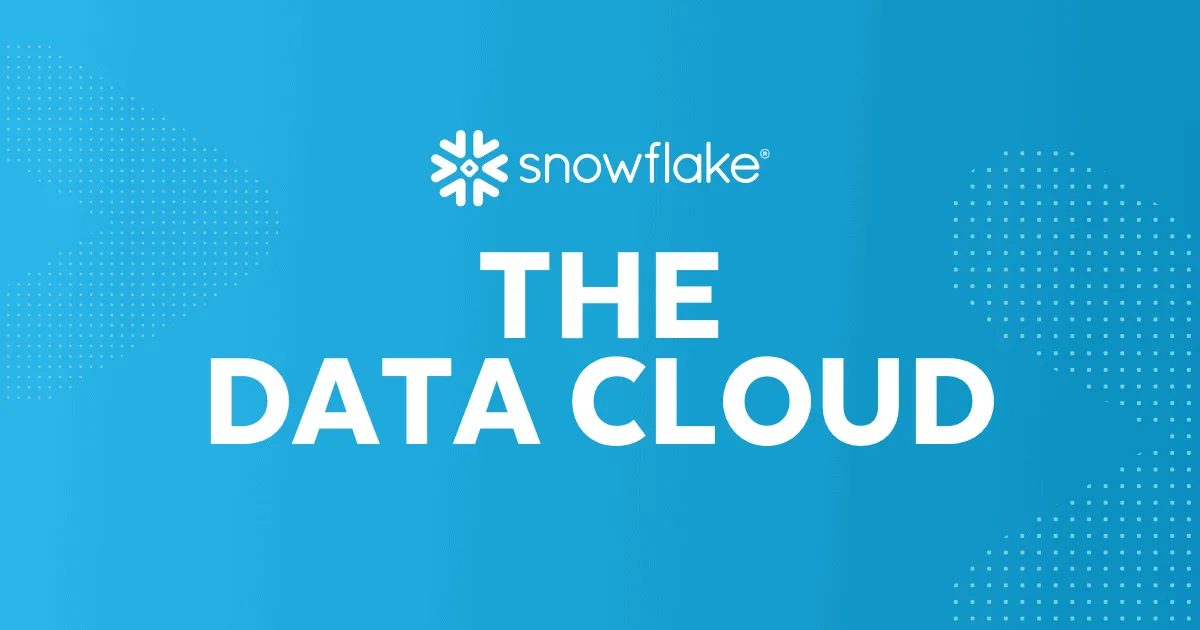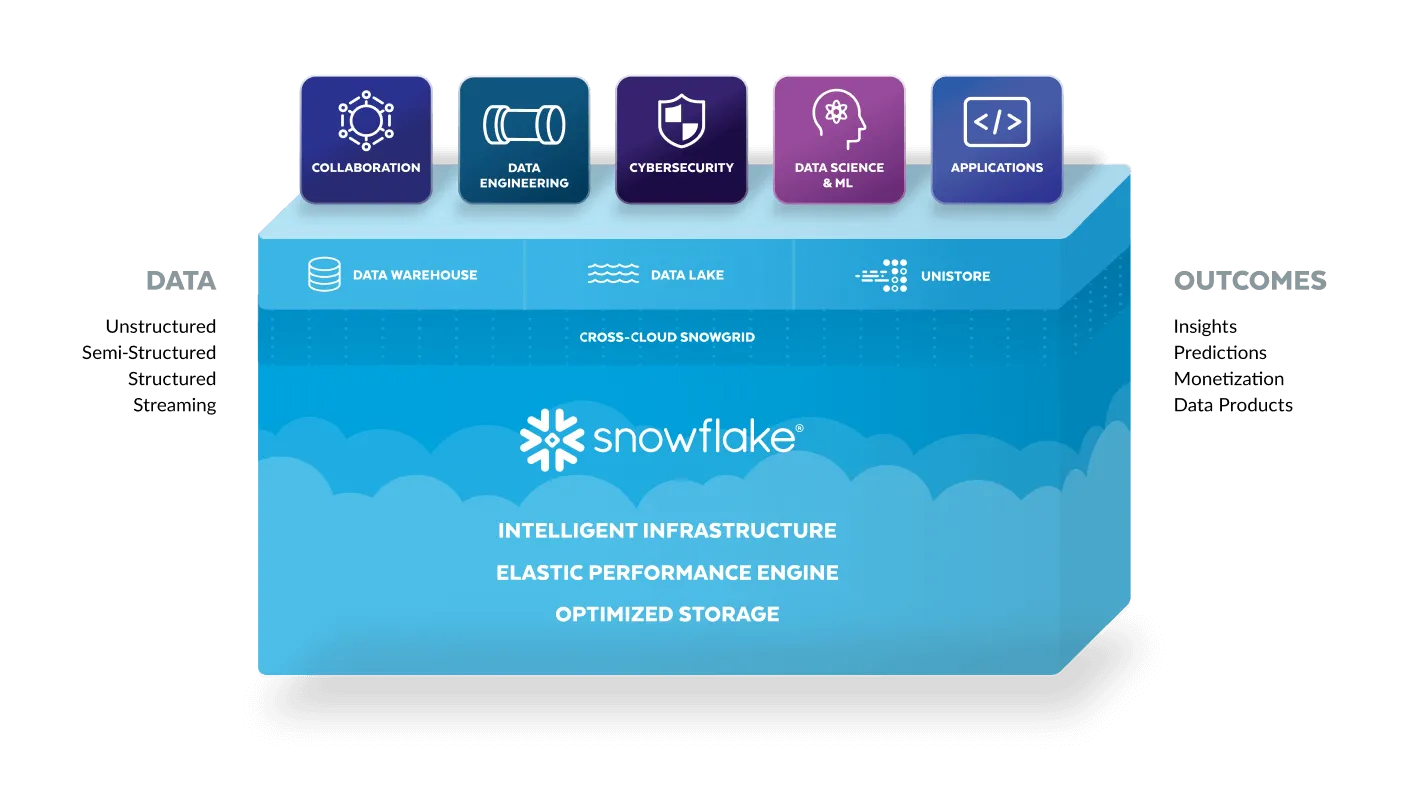What is Snowflake and How Does it Work?
Snowflake is a cloud-based data warehouse tool that provides organizations with the scalability, performance, and flexibility to handle all their data needs.

Snowflake is an increasingly popular cloud-based data warehouse solution that provides organizations with the scalability, performance, and flexibility needed to store and manage large amounts of data. Learn more about how Snowflake works and how it can help you achieve your organization's data goals.
Introduction to Snowflake
Snowflake is a cloud-based data warehouse created by Snowflake Computing, Inc., that enables organizations to store large amounts of data and access it quickly and securely. Unlike traditional on-premise data warehouses, Snowflake provides scalability and flexibility—allowing companies to store any amount of data for future use as needed. Snowflake also provides enterprise-level security, compliance, and control capabilities.
Snowflake utilizes an architecture that runs on the cloud’s existing infrastructure. This allows for scalability and increased performance, as the system can be spun up quickly and run efficiently with minimal maintenance required. With Snowflake, organizations can store large amounts of data without investing in additional hardware. Data is protected automatically with a layered security model that includes encryption of data at rest, in transit, and during processing. These features provide users with enhanced security and compliance capabilities, as well as control over how their data is accessed and used.
What is the Snowflake Computing Architecture?
Snowflake Computing utilizes a unique multi-cluster, shared data technology architecture that enables it to provide independently scalable compute and storage resources, while ensuring the security and integrity of customers' data. Snowflake clusters are arranged in a "virtual warehouse" structure that allows customers to access their data quickly and accurately and scale up or down as needed. The architecture utilizes a distributed micro-services layer and automatically manages resources, resulting in increased performance and scalability.

Source: snowflake.com
The Snowflake architecture is designed to allow customers to run SQL queries against their data in real-time and on-demand. It utilizes a log-based transaction system to ensure the data integrity and enables users to control who can access their data, as well as the level of access they have. It also supports many popular data formats like JSON, XML, Avro, Orc, Parquet and more. Snowflake's cloud services also offer customer focused tools that enable users to easily query and transform their data while facing less performance degradation as the amount of data increases.
Why Choose Snowflake?
Snowflake is an ideal data warehouse for businesses looking for a secure, cost-effective solution that can handle large datasets with increased performance, scalability and flexibility. With its independent compute and storage resources, Snowflake allows users to scale up or down depending on the data needs of their business. It also ensures the security and integrity of customers' data, giving them peace of mind while still providing access to their data when they need it most. Additionally, Snowflake's virtual warehouse structure makes it easy to manage resources, resulting in improved performance and reliability.
Snowflake offers businesses an easy way to manage, analyze and share data with minimal effort. Its Architecture-as-a-Service (AaaS) model eliminates the need to manually provision storage and compute environments, thereby freeing up users' time for other critical tasks. In addition, Snowflake's built-in Cloud Data Lake and query acceleration allow users to quickly access data in a variety of formats, making it easier to build applications or generate insights using their own datasets. Finally, customers are given complete control over the performance and security of their databases so they can customize them to best suit their needs. With its robust features and services, Snowflake is the perfect solution for businesses looking for a secure, cost-effective data warehouse.
How Does Snowflake Deliver Data?
Snowflake delivers data quickly and securely through its virtual warehouses. These warehouses are created with independent compute and storage, allowing users to only pay for the resources they use. Furthermore, Snowflake's technology ensures that the data is delivered in real time without any latency or wait time. Finally, Snowflake's sophisticated query optimization engine helps reduce costs by accurately identifying the fastest route between multiple sources, queries and results.
Snowflake's virtual warehouses are created by leveraging Azure, Amazon Web Services (AWS) and GCP cloud-based architectures. These architectures enable Snowflake to apply sophisticated algorithms to analyze data and determine which hardware configurations will run the tasks most efficiently. In addition, the architecture allows Snowflake to control each individual workload as a separate task and provides an elastic scaling capability so that every task is given its own resources. This eliminates waits associated with shared workloads and helps ensure faster response times for users. Finally, Snowflake is built on a multi-cluster distributed system which helps it readily scale up and down depending on the amount of data being processed.
Advantages and Disadvantages of Using Snowflake
Snowflake is a great tool for organizations looking for greater scalability and performance when it comes to data storage and processing. However, there are some potential disadvantages to consider before adopting Snowflake, such as the need for specialized skills or personnel to operate it properly. Additionally, compared to many traditional databases, Snowflake's cost structure may be more expensive when dealing with larger amounts of data.
Snowflake works by creating a database based on an SQL-like language that is used to query and manipulate data stored in cloud-based warehouse. Instead of using conventional row-based storage formats for data, Snowflake stores the data as micro-partitions that are compressed over time. This approach results in greater scalability since the system can take advantage of the flexibility of the cloud. Additionally, Snowflake utilizes parallel processing which can significantly improve query execution speeds when compared to traditional database management systems. These processes also ensure that resources are allocated efficiently so that only queries with high priority are executed first.
Major Benefits
Snowflake can provide businesses with near-limitless scalability, simplified automation, enhanced security features, improved scalability, and fast query performance even with large datasets. Some major benefits include:
- Scalability: Snowflake can handle increasing data as your business expands. There are no set warehouse sizes, and the software is designed to grow with your organization.
- SQL Support: Snowflake's powerful SQL engine supports complex queries and analytics.
- Simplified Automation: Snowflake automates many tasks, such as scaling up or down based on usage patterns, backups, and disaster recovery.
- Performance and Speed: Snowflake's architecture enables fast query performance even with large datasets.
- Storage Capacity: Snowflake has a high storage capacity making it ideal for businesses that handle large amounts of data.
- Data Sharing: Snowflake's architecture enables data sharing among users seamlessly through reader accounts that can be created directly from the platform.
- Enhanced Data Security: Snowflake provides enhanced security features such as rest and transit encryption, multi-factor authentication, and role-based access control.
Snowflake has several business use cases, such as -
- Data warehousing, pipelining, engineering, reporting, and dashboarding.
- Data ingestion, business intelligence, machine learning (ML), and data security and governance.
- Augment existing warehouses and provide scalable and flexible solutions.
- Help organizations scale their data platforms, boosting performance and enhancing security.
- Snowflake can be used for various data types, such as raw data in data lakes or presentable and modeled data in a data warehouse or data mart.
Industries have different use cases for Snowflake.
Retail organizations can leverage it for retail transaction analysis, while financial services companies can use it as their primary data warehouse. In addition, media and entertainment companies can store large amounts of data, while healthcare organizations can keep patient records securely in the cloud.
We can help
The possibilities are endless, and as these technologies evolve and improve, their impact on our world will only become more significant. The Snowflake experts at ExterNetworks can assist you in achieving success and excelling in pursuing your next major endeavor.




